Orange Onyx Stone Epoxy Recipe
👈
Here's our color recipe in the video:
- Metallic Powders
- Copper
- White
- Gold Dust
- Spray Paints
- White
- Black
- Dyes
- White
- Translucent Orange
Step #1: Apply Colored Wash Coat
For this recipe, we're starting with an MDF (Medium Density Fiberboard) substrate and we’re going to coat it with a 1oz/sqft batch of Stone Coat Countertops Epoxy mixed with White Dye. Mix the epoxy for at least 2 minutes using a drill and then thoroughly mix in the dye. Pour the tinted epoxy in the middle of the project and spread over the surface using a gloved hand or a mixing stick, working from the center outward until the entire surface and edges are covered.
Step #2: Mix Your Epoxy And Colors
Mix at least 3 ounces per square foot of either our Stone Coat Countertops Epoxy or, for greater UV resistance, our Art Coat. We're going to mix the epoxy for at least two minutes using a drill, making sure to mix the epoxy on the bottom and sides of the mixing bucket. Once the epoxy is thoroughly mixed, we'll distribute it into plastic cups (one per additive color) and individually mix our color additives with the epoxy.
Step #3: Pour & Spread Colored Lines
Apply your tinted epoxy to your countertop by pouring lines along the grain direction of your project. Overlap and layer the epoxy as desired. Once most or all of your colors are on the project, use a gloved hand to lightly spread the colored lines just enough to make them flow and mix with each other for a natural appearance. The most important part is to get creative, loosen up, try new techniques and have fun!
Step #4: Add Accent Veins
At this point you can drizzle even more veins with leftover epoxy. You can create at your leisure with our long open-working time. A quick way to add strong veins using white and black spray paint is to spray a little on the end of a paint stick and drag it through the project in a natural-looking line. Use a propane torch or a heat gun to feather out these veins and make them look even more natural.
Step #5: Details & Adjustments
Step back and examine your project to look for any details that stand out or don't look right. You can move the epoxy around with a gloved hand or paint stick or use a propane torch, heat gun--or even a hair dryer--to fix these problem areas. Please be aware of whether the epoxy is heated before touching, even while wearing gloves. Safety first. The epoxy will be dripping over the edges at this point. Use a gloved hand to rub these drips into the edge for better adhesion. If more epoxy is needed on the edges then you can even scoop up some of the puddles forming under the project and use that. Torch the entire surface using a propane torch to pop any bubbles and help the flow of the epoxy before leaving it to dry.
Step #6: Clear Coat Or Ultimate Top Coat
Once the color coat is all dry, your new Stone Coat Countertops project is ready for either a heat-resistant, durable clear coat or a layer of the Ultimate Top Coat for ultimate scratch resistance and a natural sheen level! Click the button below or go to https://www.stonecoatcountertops.com/over-old-tops#clear-coat to learn how. You got this!
